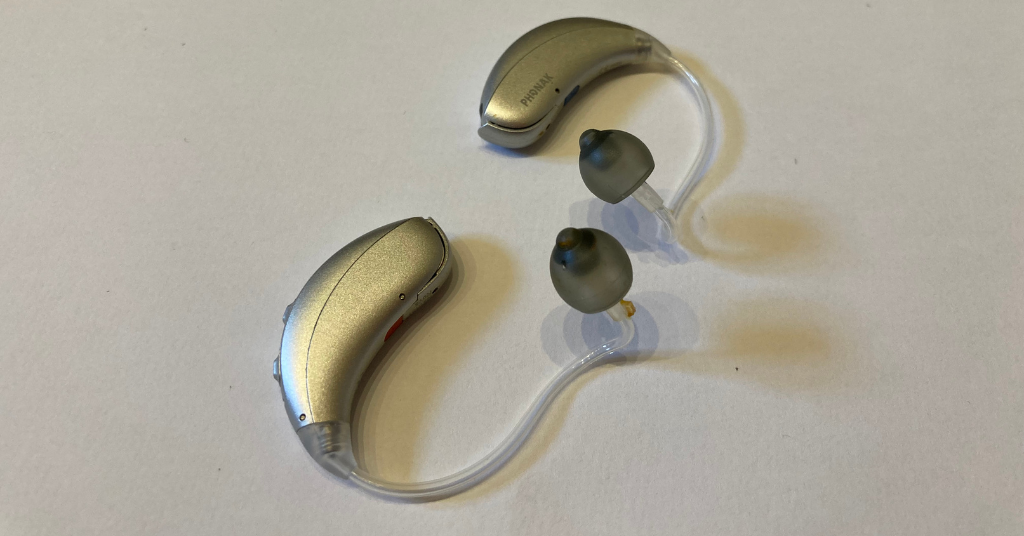Gymnastics and hearing loss: Community Spotlight
March 6, 2023Cholesteatomas and hearing loss
March 13, 2023Phonak Nova M Bluetooth hearing aids

I was given the opportunity to upgrade my (dated, beige and boring) Phonak Nathos hearing aids to a newer version last year. My audiologist had told me that the newer version, Phonak Nova M hearing aids, have Bluetooth and can be paired with my phone. However, what are they actually like to use six months on?
The Switch to Bluetooth
If you’re switching from a system that doesn’t have Bluetooth capabilities, the first thing you’ll notice is the battery life. My older hearing aids lasted about a month in between batteries. The newer ones last about a week. They also take a slimmer size 312 battery, as opposed to the older model’s PR-48.
However, the Bluetooth functionality is a godsend. I am able to stream Netflix through my laptop, take and reject phone calls with the push of a button, and connect with any device. I can also turn the volume up and down, which is a feature available in all hearing aids.
“…the Bluetooth functionality is a godsend.”
The back of my information leaflet also mentions a range of programs to assist my ears. They include AutoSense OS 3.0 (streaming), which switches modes between media speech. I also have media music to optimize my listening experience to a TV connector, a PartnerMic and a RogerDirect + Mic.
One drawback that I have noticed, though, is that the audio is not consistent. If I’m playing music through my phone in the pocket of my jeans, it tends to switch from one hearing aid to the other. The same goes for streaming content on my laptop. One solution that I have found is just to wear one hearing aid. Although this is very counterproductive, as it effectively renders one ear useless, it does make the battery supply last longer. In addition, all I have to do is remember to stand on the left side of my boyfriend when he’s talking.
To pair them with your device is very simple. Turn them on and you’ll be in pairing mode for three minutes. You can “seek” it out on your respective Bluetooth enabled devices just as if it were any other speaker.
Read more: My review of the Phonak Naida P-UP
Design
There are also no earmolds needed. As a child, I remember countless hours spent at the audiologists’, with some strange wax/Plasticine hybrid in my ears to get the mold required for my hearing aids. They’d then (presumably) be sent off to a lab and shipped to me a week or so later. Now, though, they’re just like headphone cushions. I change them every month or so, and can just throw the old ones away.
The same can be said for the tubing. Now all I need to do is unscrew the existing tube, screw one end on the hearing aid and the other onto that headphone cushion, and I’m done. It’s a lot less bother than the last models, and saves a lot of time.
I’d definitely recommend these hearing aids to anyone, especially if you’re in the UK. The benefits vastly outweigh the drawbacks. That’s why I definitely don’t regret my choice to switch. Bluetooth hearing aids have just become available on the NHS, and (if, like me) you’ve used Phonak products since 2005, you’ll definitely want to keep it that way.



